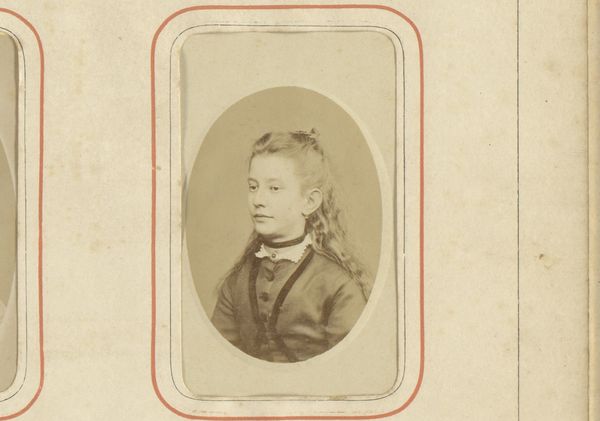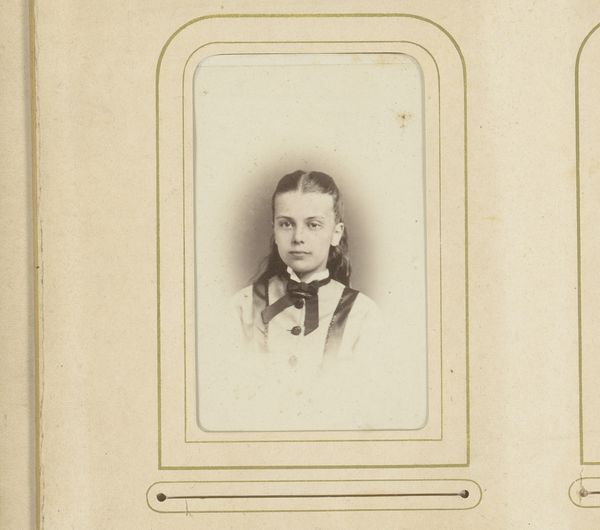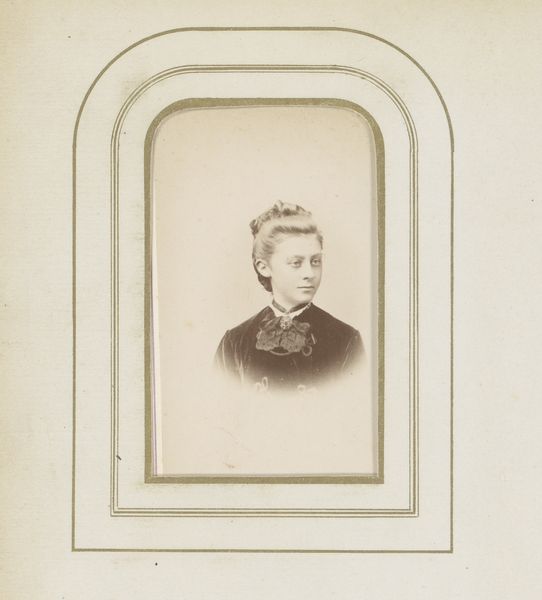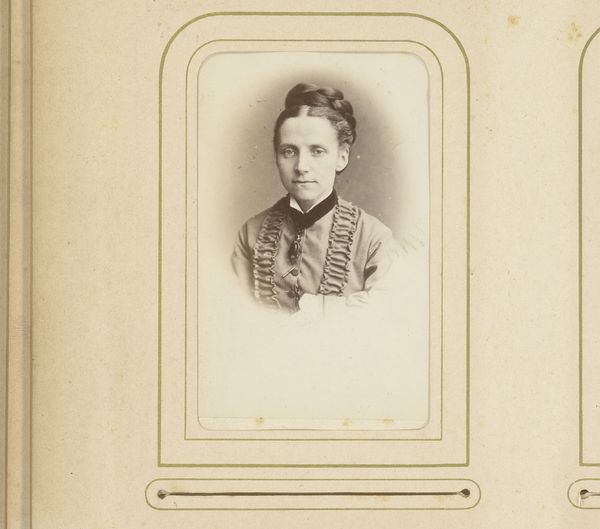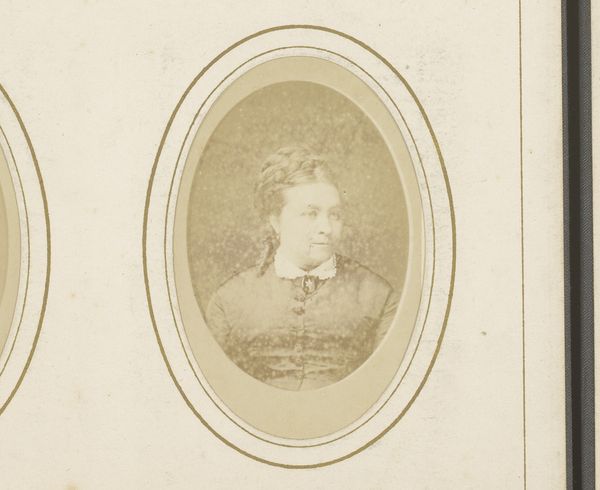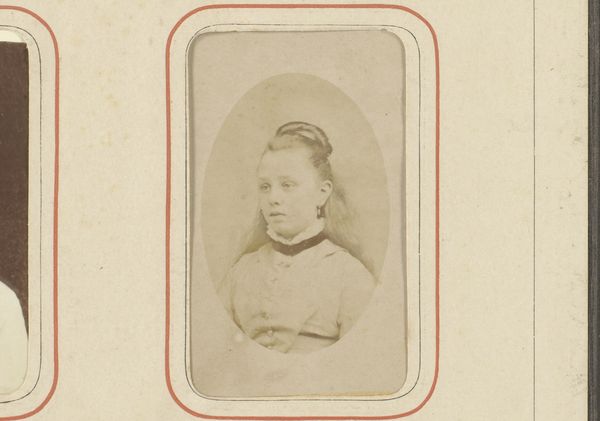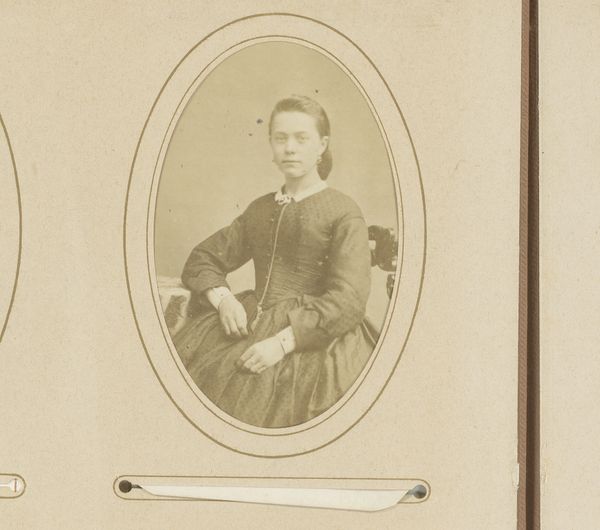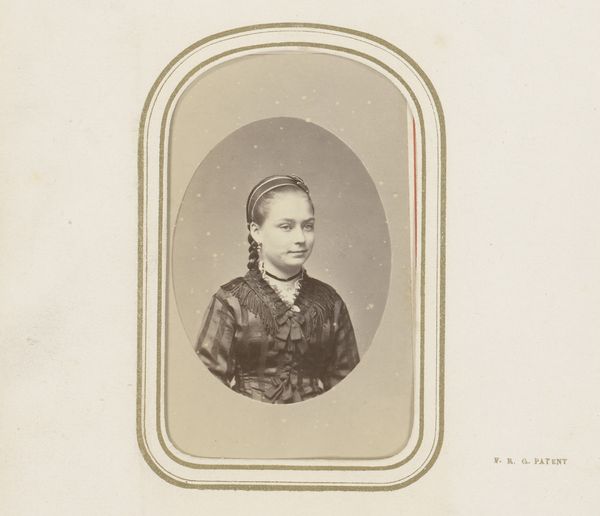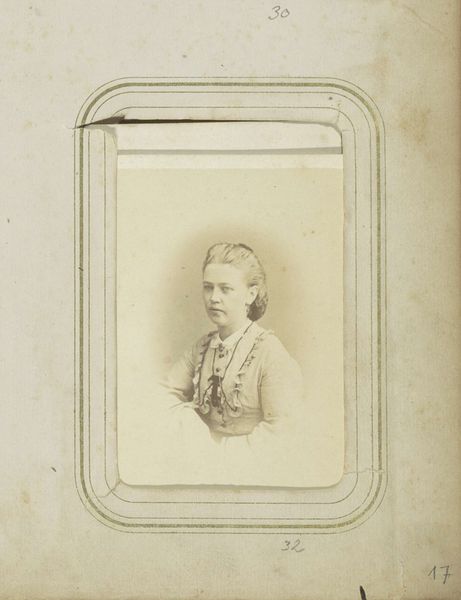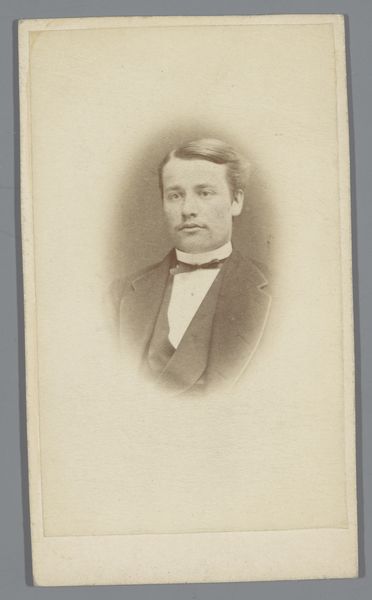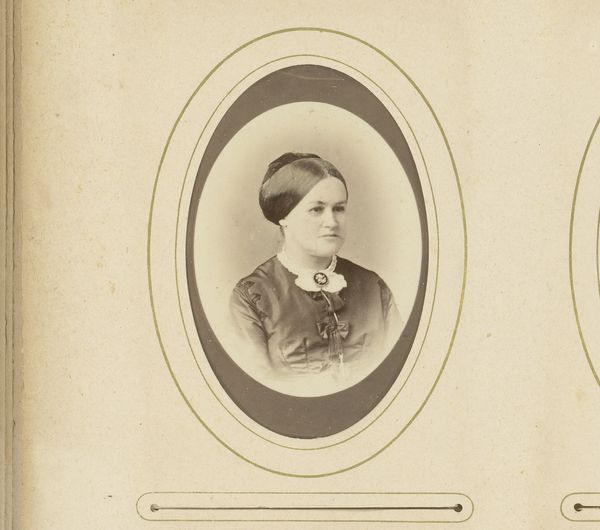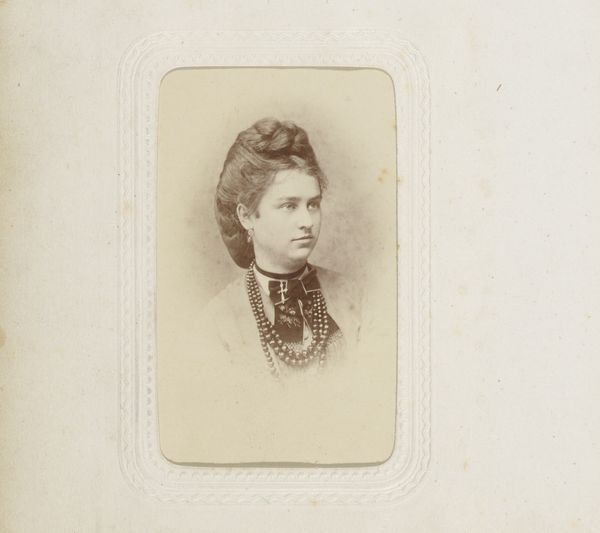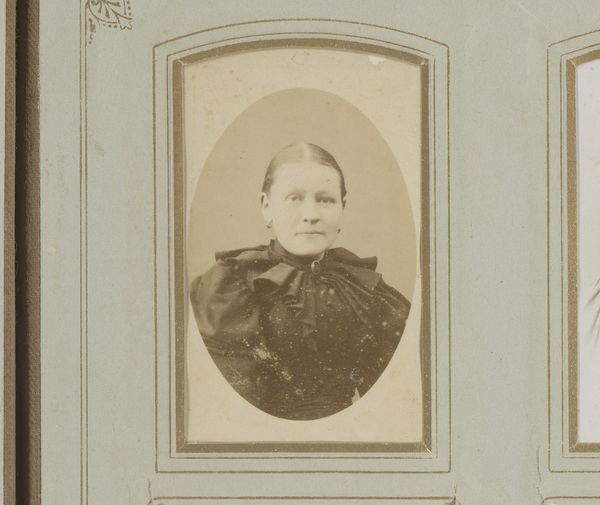
Dimensions: height 85 mm, width 52 mm
Copyright: Rijks Museum: Open Domain
Willem Gerhardus Kuijer made this photograph titled 'Portrait of a Young Woman with Necklace', using a method called carte-de-visite, sometime in the 19th century. Produced in the Netherlands, this photograph speaks to the rise of portraiture amongst the middle classes as photography became more accessible. Prior to this, portraits were the domain of the wealthy, commissioned as paintings to signal their status. The carte-de-visite, however, allowed for mass production and exchange. It created a new visual culture, where likenesses could be collected and displayed in albums, like the one this portrait is part of. What’s fascinating is how these new technologies were quickly assimilated into existing social structures. The young woman's formal attire and composed pose, for instance, reflect the conservative values of the time, while the very act of commissioning a portrait suggests a desire for social visibility and self-representation, even within the confines of societal norms. To better understand the significance of this photograph, we might delve into the social history of photography and portraiture, exploring how new technologies shape our understanding of identity and representation.
Comments
No comments
Be the first to comment and join the conversation on the ultimate creative platform.
